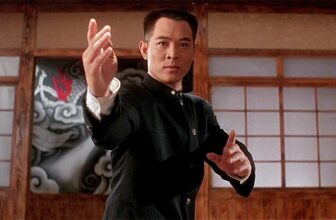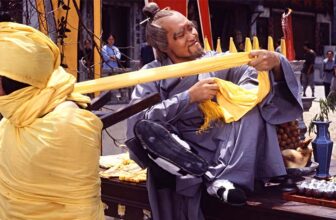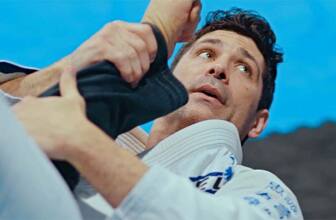
Some sports drama films about martial arts are based on real biographies, and some are fictional. The sports drama film “Raging Bull” directed by Martin Scorsese is more than a biopic about professional boxer and middleweight champion Jake LaMotta (1922-2017), it is also an emotionally devastating psychodrama about the difficult personality of a brilliant boxer, his brute force, anger, and paranoia.
The film shows the main character, the legendary boxer from both positive and dark sides. Maybe it doesn’t fall under the funny sports movie category for the online casino evening or a party with friends, but it is worth watching.
The film depicts some of the life of LaMotta, who competed with great success in the professional ring from the early 40s to the mid-50s and became the world middleweight champion in 1949.
An Iconic Martin Scorsese Sports Drama
Martin Scorsese’s iconic sports drama, based on the memoirs of famed American world boxing champion Jake LaMotta, tells the story of the highs and lows of the Bronx Bull, a challenged and fierce man whose tough temper, while helping in the ring, was ruining his personal life.
LaMotta is unable to accept his wife as she is and suffers from the “madonna-whore complex”: Freud described it as the male inability to consider women in both sexual roles and the role of friend, and partner.
A middleweight champion, who made millions of dollars, LaMotta was brilliant in boxing but aggressive, stubborn, and overwhelmed with anger, hatred, and jealousy.
Getting Up Close and Personal with Jake LaMotta
The film tackles the problem of being a “raging bull” in sports and real life: this hatred seems to have helped LaMotta to become a famous boxer, but it also devastated him, his life, and his boxing career.
Jake LaMotta became a professional boxer at the age of 19 and became an early star in the sport.
Despite all his successes in his personal life, he remained a very insecure man and even abused his wife, Vicky LaMotta. Domestic violence is one of the most important themes tackled in this movie.
As violent and realistic, as well as excruciating to watch the boxing scenes in the movie are, so are the scenes of domestic chaos, and domestic violence between the central character and his wife.
Rage Inside and Outside of The Ring
LaMotta drove himself to rage also outside the ring. After a scandal with his wife (he was very jealous because of his paranoia), he brutally beat his own brother, with Jake’s career going downhill after that.
Shot in black and white, the film chronicles La Motta’s life, and we cannot call it a classical biopic or a sports drama – the plot is built quite unconventionally for both genres, which, by the way, has a certain advantage – you get not what you want to see, so you do not know what to expect.
There’s one very interesting directorial find that brings the genres of sports and biographical drama into fresh focus – namely, the insertions of pseudo-cinema and photo newsreels as elements of the rewind of history. And, by the way, there’s a lot more sport in these very photo inserts than in the rest of the film.
One of the strongest sides of the picture is its emotional dimension. All the suspense is based on emotions that keep you going from the very first frame till the end credits – wielding influence and power the authors play on the feelings of the audience and show the inner world of the heroes.
Robert De Niro Outdid Himself in the Role of Jake La Motta
You feel them and understand everyone. LaMotta is bursting out of De Niro emotionally, physically, and psychologically. De Niro’s improvised verbal altercation with his neighbor is worth nothing.
In short, he one hundred percent hit the role in an extremely emotional game. LaMotta must be the most complicated character Robert De Niro has ever played – and he won his only Oscar for Best Actor for it.
In 1974, Robert De Niro even met and became friends with Jake LaMotta. LaMotta gave the actor a copy of his memoirs, and De Niro lit up the idea to reproduce on screen the image of a boxer, famous not only not so much for his sporting achievements, but for his uncontrolled behavior and abuse of their loved ones.
The film ends in a very philosophical way, with a verse from the Gospel of John “All I know is this: once I was blind and now I can see.” Has Jake LaMotta understood what he has done or not? Well, that’s why this film is not just a boxing movie, it is a psychodrama.






